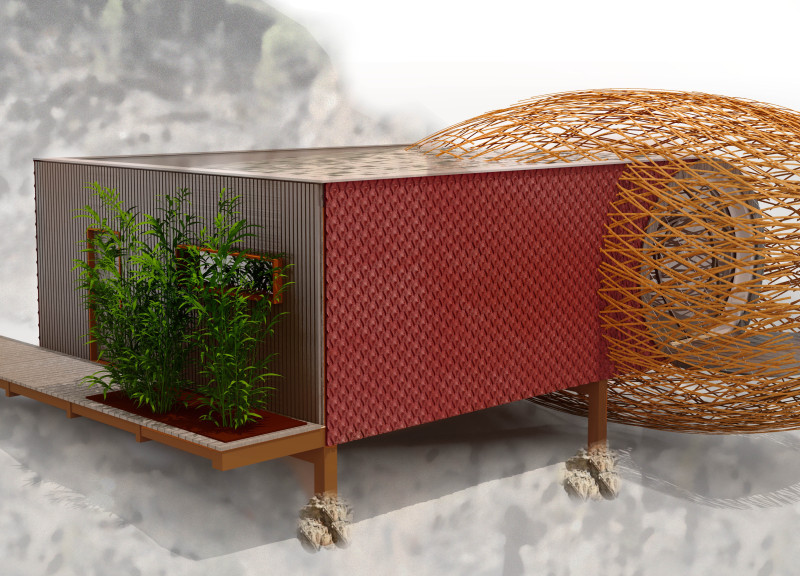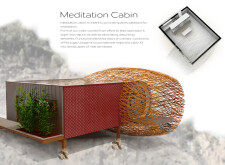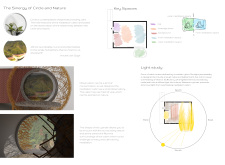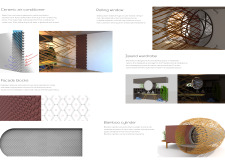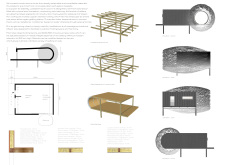5 key facts about this project
The cabin features a circular layout, a design choice that enhances the spatial experience by fostering a sense of unity and tranquility. The selection of local materials plays a critical role in its construction, supporting the overarching theme of sustainability. Bamboo, wood, ceramic, and OSB board are employed, providing structural integrity while reflecting the project’s dedication to environmental responsibility. The use of a seamed copper roof not only enhances durability but also contributes to the aesthetic coherence with surrounding natural landscapes.
The architecture of the Meditation Cabin prioritizes a seamless interaction between interior spaces and the external environment. Large, strategically placed circular windows facilitate natural light penetration while allowing occupants to remain connected to the outdoors. This integration of light serves to augment the meditative experience, as occupants can engage with changing weather conditions and the surrounding landscape.
Sustainable design practices are central to the functionality of the cabin. The elevated structure promotes ventilation and minimizes moisture accumulation. A unique air conditioning system, which utilizes ceramic materials, is incorporated to manage internal climate optimally, ensuring a comfortable atmosphere throughout varying weather conditions. Rainwater collection systems further enhance the project’s ecological focus, making efficient use of local resources.
Unique Design Approaches
The Meditation Cabin distinguishes itself through its innovative use of form and material. The circular design not only resonates with meditative concepts but also facilitates a spatial organization that enhances movement and experience within the space. Each designated area—meditation room, massage space, and communal areas—has been purposefully designed to foster a quiet environment while maintaining accessibility.
The choice of materials, particularly the use of self-made bricks and bamboo, allows for a blend of modern and traditional construction methods, creating a dialogue between local craftsmanship and contemporary architectural ideas. This thoughtful approach emphasizes the connection to the site and its history, cultivating a deeper sense of place.
Architectural Integration and Functionality
The architectural integration of light and space is paramount in the Meditation Cabin. The configuration of circular windows serves multiple purposes: optimizing natural light, supporting ventilation, and enhancing the visual connection to the surrounding environment. This deliberate design fosters a calming atmosphere conducive to the core functions of meditation and relaxation.
The strategic positioning of communal and private spaces reflects an understanding of human interaction within the context of meditation. By creating distinct zones, the design accommodates individual practices while also offering opportunities for communal gatherings, aligning with the holistic nature of wellness.
For further insights into this architectural project, including architectural plans, sections, and detailed designs, readers are encouraged to explore the comprehensive project presentation. This exploration will provide a deeper understanding of the design concepts and their implementation within this unique architectural framework.


